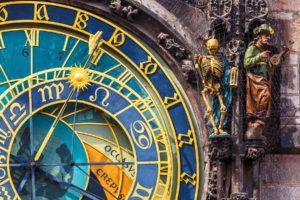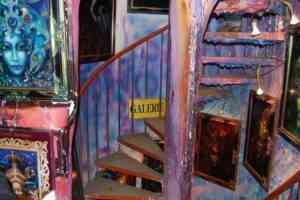Fodor's Expert Review Vyšehrad Citadel
Bedřich Smetana's symphonic poem Vyšehrad opens with four bardic harp chords that echo the legends surrounding this ancient fortress. Today the flat-top bluff stands over the right bank of the Vltava as a green, tree-dotted expanse showing few signs that splendid medieval monuments once made it a landmark to rival Prague Castle.
The Vyšehrad, or "High Castle," was constructed by Vratislav II (ruled 1061–92), a Přemyslid duke who became the first king of Bohemia. He made the fortified hilltop his capital. Under subsequent rulers it fell into disuse until the 14th century, when Charles IV transformed the site into an ensemble including palaces, the main church, battlements, and a massive gatehouse whose scant remains are on V Pevnosti ulice. By the 17th century royalty had long since departed, and most of the structures they built were crumbling. Vyšehrad was turned into a fortress.
Vyšehrad's place in the modern Czech imagination is largely thanks to the National... READ MORE
Bedřich Smetana's symphonic poem Vyšehrad opens with four bardic harp chords that echo the legends surrounding this ancient fortress. Today the flat-top bluff stands over the right bank of the Vltava as a green, tree-dotted expanse showing few signs that splendid medieval monuments once made it a landmark to rival Prague Castle.
The Vyšehrad, or "High Castle," was constructed by Vratislav II (ruled 1061–92), a Přemyslid duke who became the first king of Bohemia. He made the fortified hilltop his capital. Under subsequent rulers it fell into disuse until the 14th century, when Charles IV transformed the site into an ensemble including palaces, the main church, battlements, and a massive gatehouse whose scant remains are on V Pevnosti ulice. By the 17th century royalty had long since departed, and most of the structures they built were crumbling. Vyšehrad was turned into a fortress.
Vyšehrad's place in the modern Czech imagination is largely thanks to the National Revivalists of the 19th century, particularly writer Alois Jirásek. Jirásek mined medieval chronicles for legends and facts to glorify the early Czechs, and that era of Czech history is very much in the popular consciousness today.
Today, the most notable attraction within the fortification walls is the Basilica of Sts. Peter and Paul, the landmark neo-Gothic church that can be seen from the riverside. Head inside to see the rich art nouveau decorations, including carvings, mosaics, and figural wall paintings. Beside the church is the entrance to Hřbitov Vyšehrad (Vyšehrad Cemetery), the final resting place of some of the country's leading artists and luminaries, including composers Antonín Dvořák and Bedřich Smetana.
Traces of the citadel's distant past can be found at every turn and are reflected even in the structure chosen for the visitor center, the remains of a Gothic stone fortification wall known as Špička, or Peak Gate, at the corner of V Pevnosti and U Podolského Sanatoria. Farther ahead is the sculpture-covered Leopold Gate, which stands next to brick walls enlarged during the 1742 occupation by the French. Out of the gate, a heavily restored Romanesque rotunda, built by Vratislav II in the 11th century, stands on the corner of K Rotundě and Soběslavova. It's considered the oldest fully intact Romanesque building in the city. Down Soběslavova are the excavated foundations and a few embossed floor tiles from the late-10th-century Basilika sv. Vavřince (St. Lawrence Basilica, closed to the public). The foundations, discovered in 1884 while workers were creating a cesspool, are in a baroque structure at Soběslavova 14. The remains are from one of the few early medieval buildings to have survived in the area and are worth a look.
On the western side of Vyšehrad, part of the fortifications stand next to the surprisingly confined foundation mounds of a medieval palace overlooking a ruined watchtower called Libuše's Bath, which precariously juts out of a rocky outcropping over the river. A nearby plot of grass hosts a statue of Libuše and her consort Přemysl, one of four large, sculpted images of couples from Czech legend by J. V. Myslbek (1848–1922), the sculptor of the St. Wenceslas monument.
READ LESS







